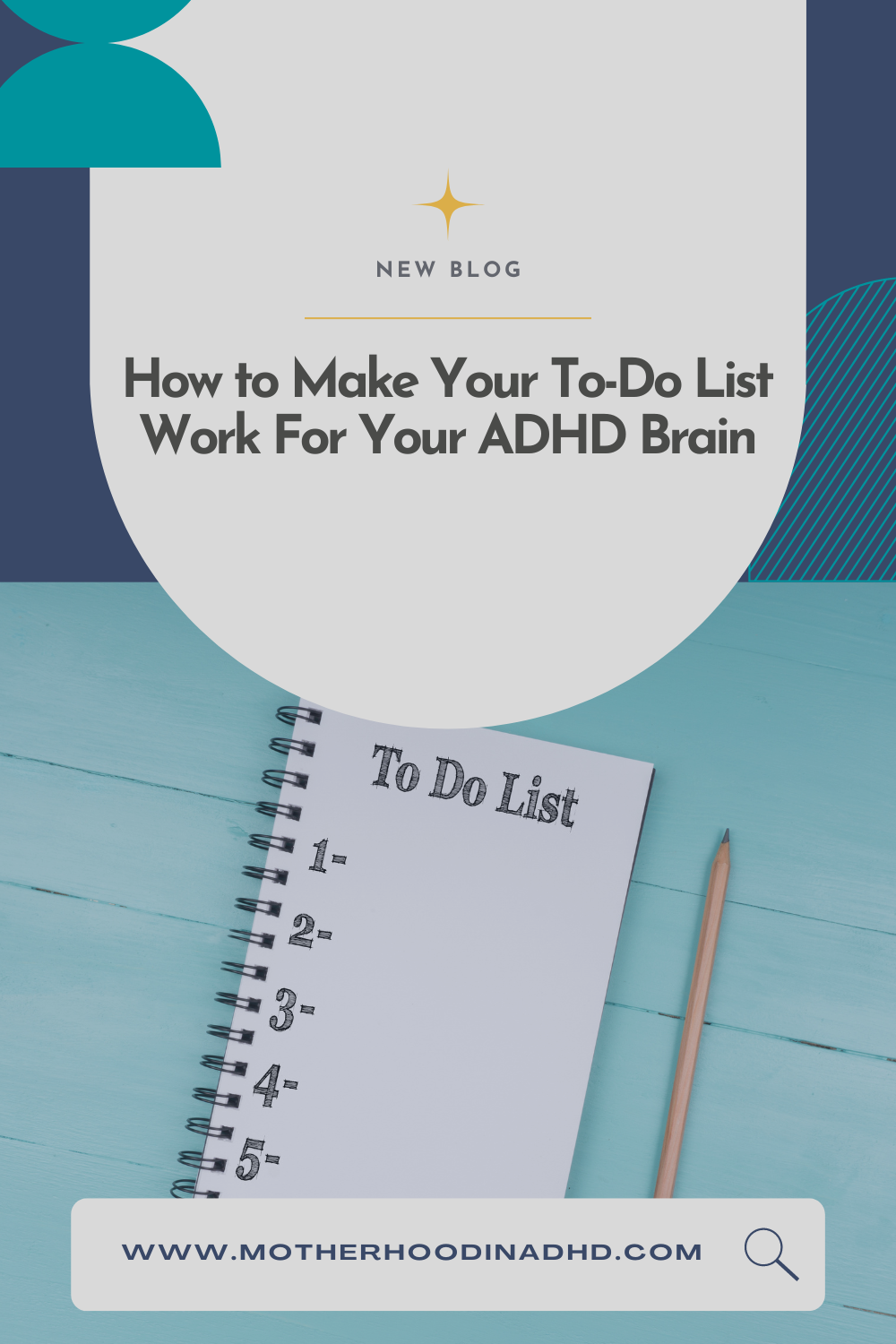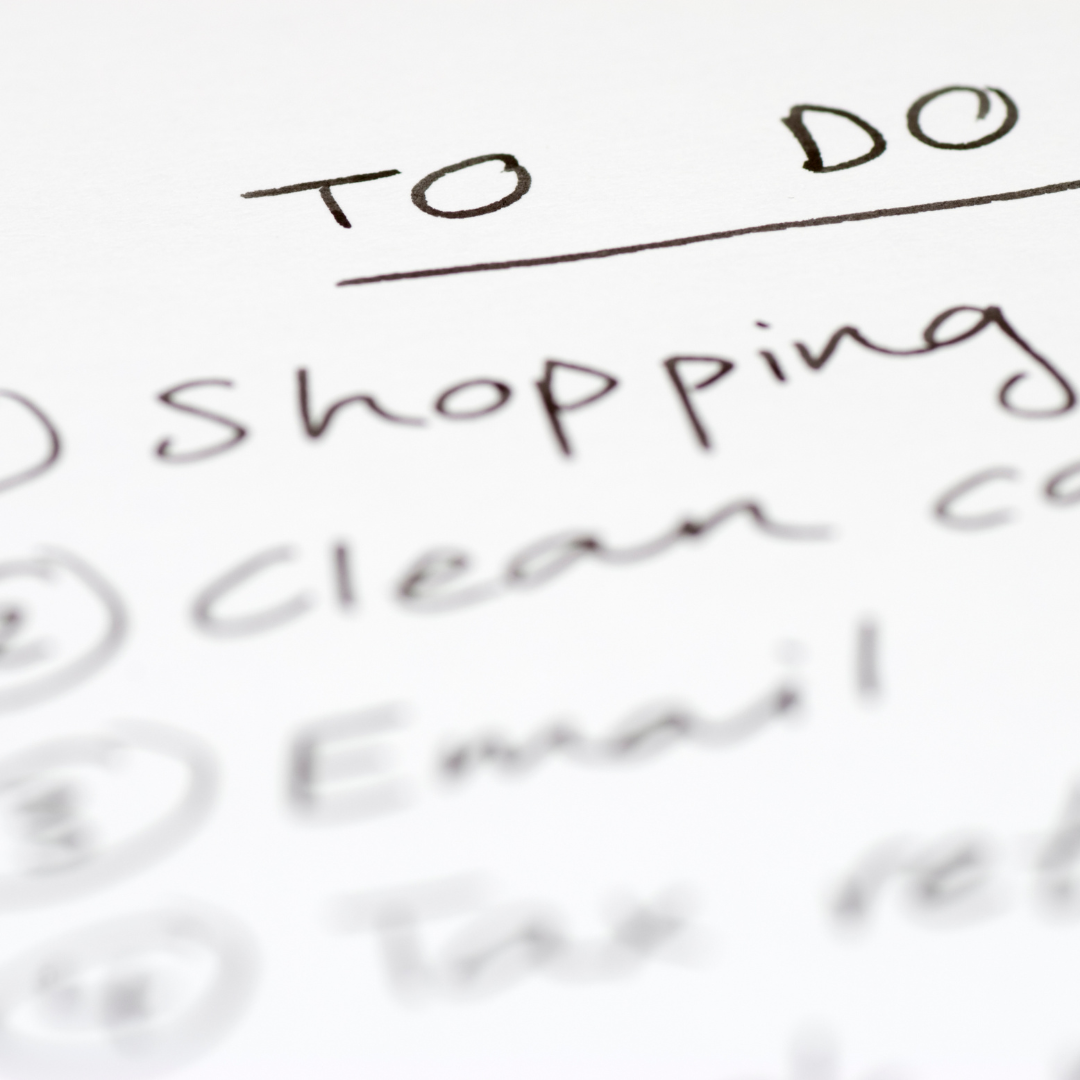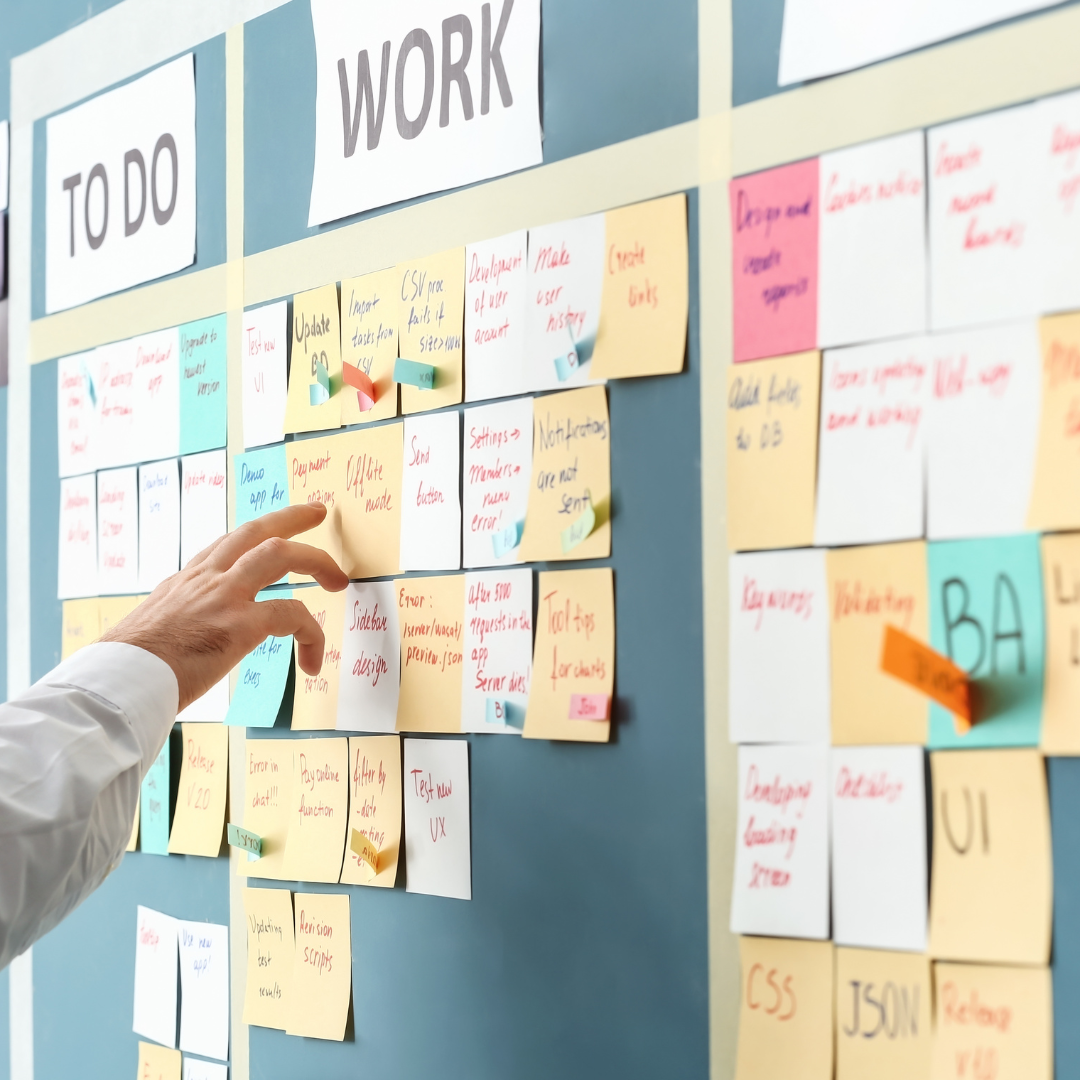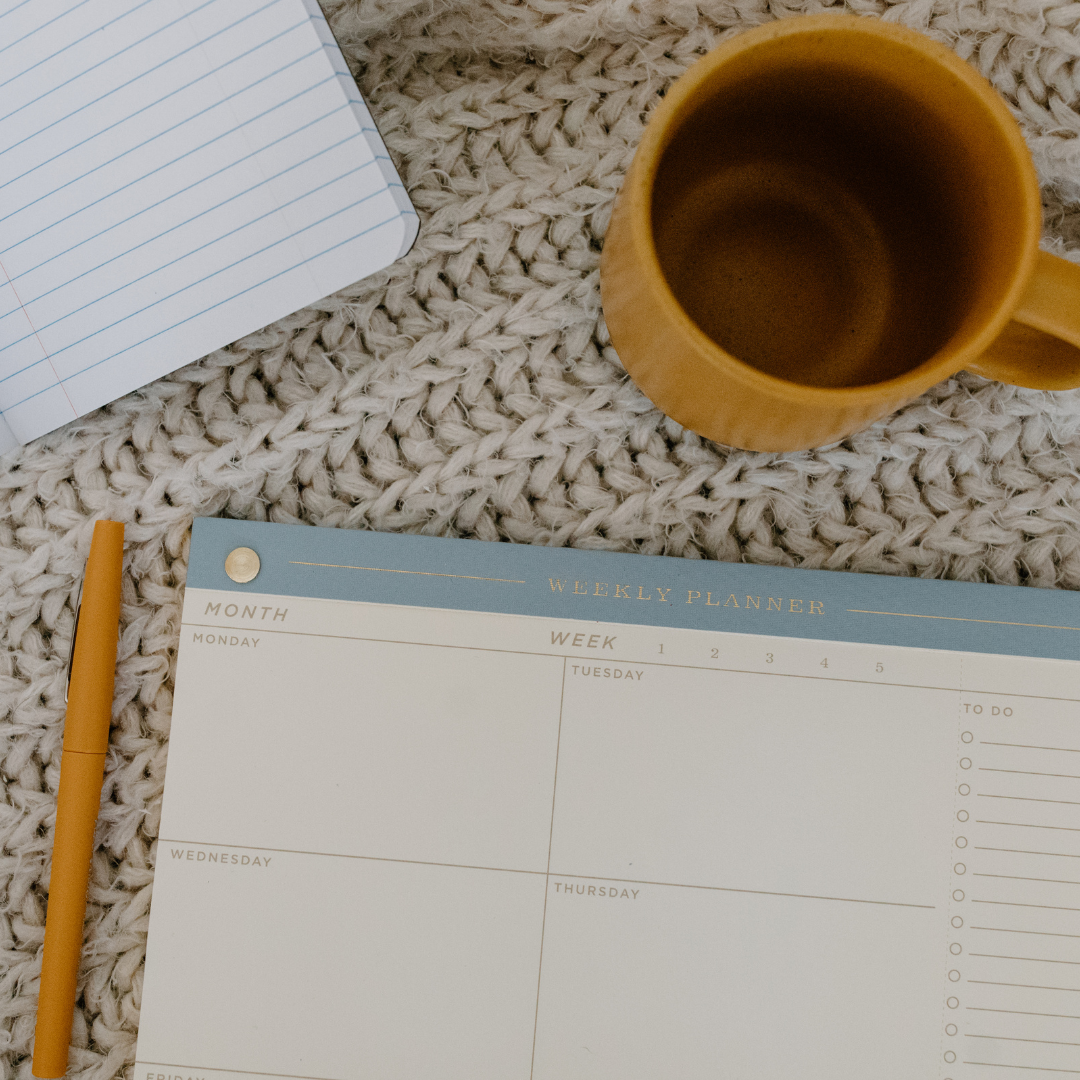How to Make Your To-Do List Work For Your ADHD Brain
“Just write it down!”
“Set a reminder!”
“Write a to-do list!”
You give your friend a strained smile and thank her for the advice (that you’ve definitely never heard before!), as you think to yourself:
If she had even the slightest clue what it's like to have ADHD, she’d stop giving me the same tired advice.
If making a to-do list worked, I wouldn’t have so many problems staying organized.
The thing is, you’ve made to-do lists before. In fact, you write one every day.
You have fifteen post-its stuck to your desk at this very moment, two planners, a wipe-off calendar, and fifty-three random notes written on your phone.
You’ve tried to get organized. You’ve read all the books and the blogs, and nothing really works.
But then again, your brain doesn’t work like everyone else’s.
You have ADHD - and that means you experience life differently than the neurotypical author who wrote the books about organization, or your neurotypical friend who gives well-meaning advice.
In episode 106 of the Motherhood in ADHD podcast, we discuss how to rethink organization, and how to create a personalized organizational system that works for your life.
Click below to listen, or if you prefer the written word, read on!
Important Habits to Start (and Stop) Doing to Make Your To-Do List ADHD-Friendly
Maybe your to-do list isn’t the problem – maybe it’s how you use it.
Below are some habits to start (and stop!) doing to make your organizational system work for you.
STOP: Looking for an App to Save You
Oh, the organizational app.
From ClickUp (which I use!) to Trello or Asana, you’ll find a million apps promising to get your life completely together!
You can get lost scrolling your app store, or experience ADHD paralysis trying to decide which one to download.
START: Figuring Out What Works for You
Don’t force yourself to learn how to use an app if technology isn’t your strong point.
If you find one that helps – fantastic! Keep using it – no need to try ten million of them to see if there’s a “better” one out there. And definitely don’t turn your quest for the perfect app into a massive exercise in procrastination.
The key is to find the tools that work for you, the ones you know you’ll use consistently – AFTER you’ve figured out what system works for you, and if that means going completely analog with a paper planner and calendar, so be it!
STOP: Cluttering Your Calendar by Using it as a To-Do List
Does your calendar have so much written on it, you can’t even see the dates anymore?
Do you purposely look the other way each time you pass it, because it looks so cluttered and overwhelming?
It’s probably because you’re using your calendar as a to-do list, and it’s getting messy!
START: Separating Your Tasks into a Nearby but Separate System
Your calendar and to-do list are eyebrows, not a unibrow – meaning they stay close to each other but are two separate things.
Your calendar serves two important purposes:
To help you remember the date
To hold reminders of specific events
So when you look at your calendar, you should see items like “Baseball game 7pm” or “Therapy at 3:30pm”, not “take out the trash” or “empty the dishwasher”.
Use your to-do list for tasks that do not have to be done at a specific time, and your calendar for events that are time specific.
STOP: Doing Tasks One at a Time
If you feel like you never have enough time in the day (or week), you’re probably focused on doing one task at a time.
You cook prep and each meal separately, have one day of the week (or a whole weekend) dedicated to cleaning your house, and embark on one trip after another to the store each time you remember you need an item.
There’s a better way.
START: Batching Your Tasks by Grouping Them Together
“Batching” your tasks saves you time and helps you stay motivated.
Got a bunch of calls to make that you’re seriously dreading? Knock them all out at once.
Need to pay bills? Take the time to pay them all at the same time while you’re at your computer and have your wallet handy.
Meal prep ahead of time by chopping all the vegetables needed for cooking all week.
Run all of your errands at once instead of making multiple trips.
Before you end a task, ask yourself “what else can I do along this same theme?” Use your momentum while you have it.
STOP: Being Reactive
Do you find yourself playing “whack-a-mole” with your day, addressing issues as they pop up?
“Going with the flow” seems liberating, but when you don’t take time to prioritize what’s important, everything feels urgent (even when it’s not!).
As a result, those important tasks, like tucking your kids into bed each night or getting a much-needed workout, tend to fall by the wayside because you run out of time.
START: Being Proactive
Part of being organized is putting some deep thought into what’s most important in your life.
Once you write your to-do list for the day, prioritize it in order of importance and urgency.
Sometimes, tasks feel urgent but are not important.
Some are important but not urgent.
Some are urgent and important – and those go at the top of your list.
And some tasks are neither urgent or important, and those just need to disappear from your list.
The eisenhower matrix is a helpful tool to help you decide which tasks to put in each category.
Ready to Master Your To-Do List, ADHD Style?
You’ve read a lot of great to-do list tips today, but if you still feel a little anxious about how to integrate them into your life, you might need some extra support!
That’s why I’ve created an entire course for moms with ADHD who want to get organized so they can spend more time on the things and people they love most.
Your ADHD brain is unique - so it’s important to have access to tools designed specifically for people like you, explained in a way that makes sense to the ADHD mind.
Being a mom with ADHD myself, I experienced confusion and overwhelm when trying to do things the neurotypical way. I couldn’t find an organizational system that clicked in my brain, so I decided to create one myself.
I developed a system of managing my calendar and to-do list that worked for my ADHD, and I knew I needed to share it to help other ADHD moms.
In the Daily Planning for ADHD Moms Course, you’ll learn:
To create and keep up with a calendar and to-do list
How to create a system that works for your unique personality and lifestyle
ADHD-specific tools to help you stay organized
You’ll also have access to weekly support meetings where you can connect with and support other moms with ADHD.
Ready to get started and master your to-do list? Sign up for Daily Planning for ADHD Moms today!



